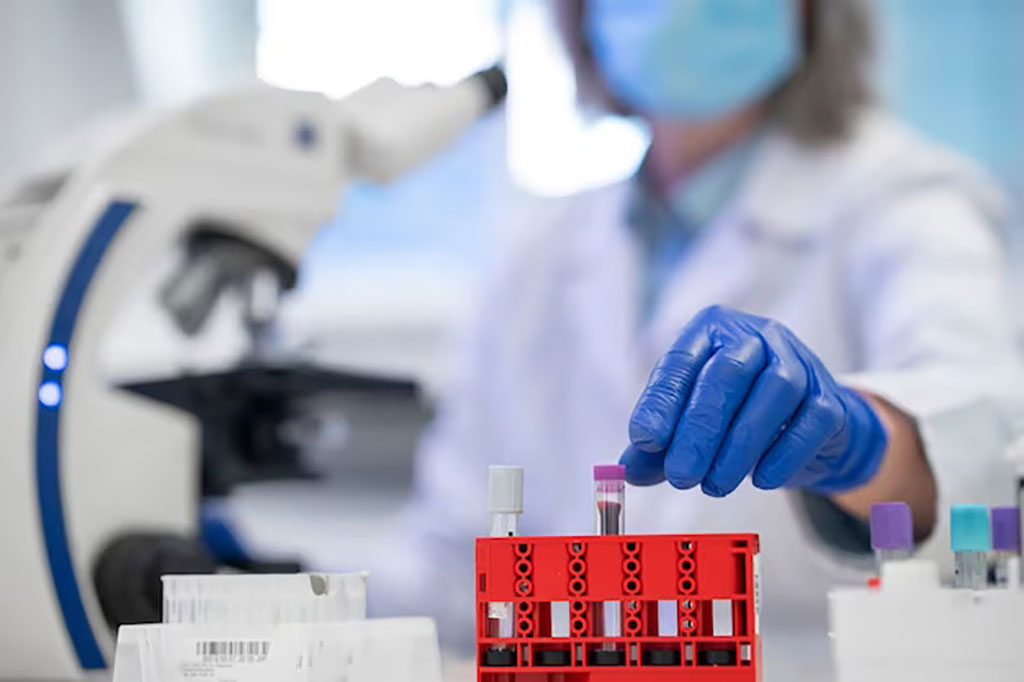Rapid Blood Test Detects and Distinguishes Between 18 Infectious or Inflammatory Diseases
Posted on 21 Aug 2023
Infectious and inflammatory diseases often bring children into hospitals and clinics for medical care. The challenge for healthcare professionals lies in accurately differentiating between potentially severe bacterial infections and less critical ailments, especially when symptoms such as fever are common to many illnesses. As a result, many patients might receive broad-spectrum antibiotics as a precautionary measure until bacterial infection is ruled out. This overuse of antibiotics contributes to antimicrobial resistance and an uptick in drug-resistant infections. Traditional diagnostic tests typically focus on identifying specific pathogens, like SARS-CoV-2, HIV, or Influenza through lateral flow tests (LFTs), or bacteria and yeast through blood cultures. However, these methods have their limitations. LFTs can only confirm or deny a specific cause, while blood cultures may take up to 72 hours or more for reliable results. But now, a promising blood test that can rapidly diagnose the cause of a child's illness is being hailed as ‘transformative’.
An international team, led by researchers at Imperial College London (London, UK) has developed and validated a diagnostic method that can simultaneously detect and differentiate between 18 infectious or inflammatory diseases, such as group B Streptococcus (GBS), respiratory syncytial virus (RSV), and tuberculosis. Unlike current tests that can take hours, days, or even weeks, this approach is designed to yield results in under an hour. The innovative test uses a single blood sample to diagnose the cause of fever by recognizing specific patterns of genes that are activated or deactivated by the body in response to particular illnesses. The finding builds on over a decade of research that seeks to detect and diagnose illnesses through gene expression patterns.

In this new study, the researchers analyzed the pattern of gene expression in blood in response to various infections and inflammatory conditions. They collected data from thousands of patients, including over 1000 children suffering from 18 infectious or inflammatory diseases, to identify the key genes that were switched ‘on’ or ‘off’. Utilizing machine learning, the team identified a panel of 161 genes for 18 conditions that corresponded to specific disease areas and pathogens. To further validate the panel, the researchers assessed a group of 411 pediatric patients hospitalized with sepsis or severe infections. Gene expression from blood analysis was compared to diagnoses made using existing clinical methods.
As introducing new diagnostic tests in a clinical setting can have severe consequences if misdiagnoses occur, the team applied a 'cost-sensitive' measure, consulting a panel of five clinical experts to ensure the test could accurately avoid misdiagnoses where the consequences would be most significant. While still in the proof-of-concept stage, the researchers are hopeful that a diagnostic test centered on patients' gene expression could markedly enhance the diagnosis of childhood diseases. This breakthrough could minimize delayed or missed diagnoses and make a substantial difference in healthcare, especially in regions with limited resources.
“This body of work has enabled us to identify the molecular signature of a wide range of diseases based on 161 genes, out of thousands of genes in the human genome. By distinguishing between many diseases at the same time within the same test, we have developed a more comprehensive and accurate model that aligns with the way clinicians think about diagnosis,” said Dr. Myrsini Kaforou, Senior Lecturer within Imperial’s Department of Infectious Disease. “A future diagnostic test based on this approach could help provide the right treatment, to the right patient, at the right time, while optimizing antibiotic use, and reducing lengthy time to diagnosis for inflammatory diseases.”
Related Links:
Imperial College London














